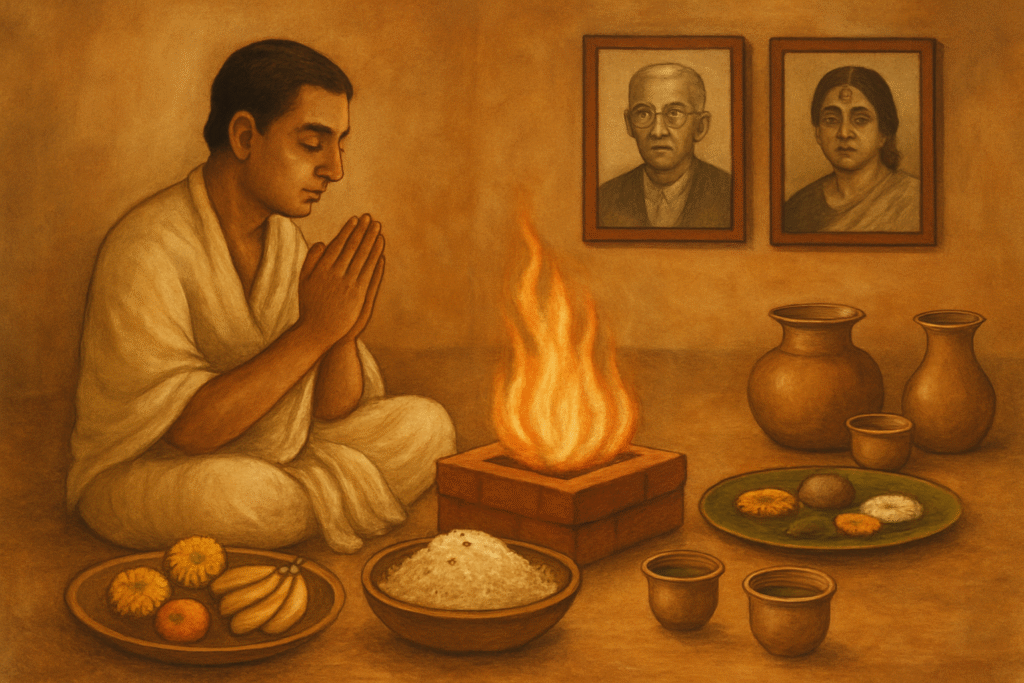
In the Indian spiritual journey, there are few rituals that are very deeply rooted in emotions and traditions as Shradh. This age-old practice is a way of expressing respect, love and gratitude towards our ancestors. Rather than being just a religious custom, Shradh serves as a spiritual bridge between the living and the departed, emphasizing the eternal nature of relationships and duties between generations.
As we move forward in modern life, understanding and embracing the true significance of Shradh can help us stay connected to our roots and honor those who have made our existence possible.
What is Shradh (Shraddha)?
Shradh (also spelled Shraaddha or Śrāddha) is a sacred Hindu ritual performed in honor of deceased ancestors. The word “Shradh” comes from the Sanskrit word ‘Shraddha’, which means faith or devotion.
The purpose of Shradh is to repay any debts weowe to our deceased ancestors by gratifying their spirits as well as to make free of their sins. The importance of performing Shradh Karma with full devotion has been mentioned in the Shastras.
According to Hindu beliefs, Shradh is of special significance on the full moon day of Bhadrapada month (falls in August and September of the Gregorian calendar). During this period of 16 days, Hindus pay homage to their ancestors, especially through food offerings. It is believed that Pind Daan and Tarpan performed by the son and family members satiate the hunger and thirst of the soul during its journey.
According to Hindu philosophy, when a person dies, his soul (atma) goes to another world. However, it is believed that the soul maintains a karmic connection with the earthly level, especially with its family. Performing Shradh rituals helps ensure that the soul finds peace (moksha) and aids its spiritual progress.
Shradh is not just a personal gesture of love and remembrance – it is considered a duty (dharma) for every Hindu, especially male descendants, to perform these rituals for their departed ancestors.
When is Shradh performed?
Shradh can be performed at different times depending on the occasion and tradition, but three main periods are considered particularly important:
1. Pitru Paksha (Fortnight of the Ancestors)
This is a 16-day period observed during Krishna Paksha in the Hindu month of Bhadrapad (usually September-October). Each day is dedicated to paying homage to ancestors who passed away on a specific date (lunar day).
- Pitru Paksha is the most auspicious and widely observed time for Shradh.
- Hindus believe that during this period, ancestors come to bless their descendants.
2. Amavasya (New Moon)
The new moon day, or Amavasya, is another ideal time to perform Shradh, especially when the death date is unknown. It is believed that there is a spiritually deeper connection between the living and the departed on the day of Amavasya.
3. Annual Shradh (Tithi Shradh)
This is performed on the exact lunar date (Tithi) of the deceased’s demise each year, as per the Hindu calendar. Many families observe this as a tradition and consider it a spiritual birthday in memory of the departed soul.
Why is Shradh important?
1. It expresses Gratitude
Shradh is a way of saying thanks to those who have given us life, culture and values. It is an act of acknowledging the legacy of our parents, grandparents and ancestors. Gratitude is considered a powerful spiritual practice, and Shradh is its expression towards our ancestors.
2. It Brings Peace to the Departed Soul
Hindu scriptures state that if Shradh rituals are not performed, the soul may remain restless, stuck in the state of Pret (wandering soul), unable to move on. By offering food, water and prayers, we provide spiritual nourishment and peace to these souls.
3. It Attracts Blessings from Ancestors
Ancestors are considered guiding spirits who can bless us or protect us. Performing Shradh helps us invoke their blessings for health, prosperity, fertility and overall well-being.
4. It Balances Karmic Debt (Pitru Rina)
Every person is said to be born with three debts (Rinas): Challenges:
- Deva Rin (towards the gods),
- Rishi Rin (towards the sages), and
- Pitru Rin (towards the ancestors).
Shradh is a means of repaying the Pitru Rin. Not fulfilling this duty can lead to Pitru Dosha, which is believed to cause delays and difficulties in life, especially in marriage, career and child birth.
Traditional method of performing Shradh
The actual rituals may vary by region, community or family tradition, but here is a general outline of how Shradh is traditionally performed:
1. Tarpana
This involves offering sesame seeds, barley, kusha and sometimes water mixed with milk. Devotees chant mantras and offer water in a specific direction (usually facing south) to invoke and appease the souls of ancestors.
2. Pind Daan
This is a symbolic offering of rice balls (Pindas) made from cooked rice, sesame seeds and ghee. Pindas represent the body of the deceased and offering them is believed to help the soul to detach from the material world and attain salvation.
3. Shradh Bhojan (Feeding Brahmins or the needy)
This is the practice of preparing pure, Satvik food (vegetarian and cooked without onion or garlic) and offering it to Brahmins, cows or the poor. This act of selfless eating is considered equivalent to feeding the ancestors themselves.
4. Dakshina (Offering)
After the meal, donations or Dakshina are given to the Brahmins or priests. This is considered a part of the offering made to the ancestors.
5. Mantra recitation
Specific Vedic mantras and Shradh prayers are chanted to invite the presence of ancestors, seek their forgiveness, and grant them peace and blessings.
Note: Shradh is traditionally performed by the eldest son or male descendant, but in modern times, women and daughters have also started performing these rituals with devotion.
Modern challenges and adaptations
Although Shradh rituals are rich in traditions, modern lifestyles can make it difficult to perform them in the traditional way. Here are some common challenges and solutions:
Challenges:
- People live in urban cities or abroad, away from temples or family homes.
- Lack of access to priests (purohits) or ritual knowledge.
- Busy schedules make it difficult to find time for rituals.
- Some feel disconnected from ritualistic practices and seek simplified spiritual expressions.
Adaptations:
- Perform a simple Shradh at home with just a candle, flowers, some food, and a heartfelt prayer.
- Donate food or clothing to the poor in memory of ancestors – this is a valid and meaningful form of Shradh.
- Book virtual Shradh services through trusted online platforms or temples.
- Chant mantras or observe a day of silence or fast as a personal spiritual tribute.
The intention and faith behind this action (Shradh) is far more important than the complexity of the ritual.
Conclusion: Honouring the Past, Blessing the Future
Shradh is much more than a religious practice – it is a sacred reminder of our roots, our duties, and our connection to a lineage that extends far beyond our own lifetime.
By performing Shradh, we fulfil a spiritual responsibility, nurture our karmic balance, and create a sense of continuity between generations. Whether it is performed in a grand ceremony or in a quiet moment of contemplation, the essence of Shradh lies in gratitude, remembrance and reverence.
By honouring our ancestors in the traditional way, we are also blessing our present and future – receiving strength, wisdom and blessings from those who walked this path before us.
Call to Action:
Have you ever performed Shradh or seen it done in your family?
Do you perform any special traditions in honour of your ancestors?
Share your experiences in the comments below – let’s keep these sacred memories alive together.
